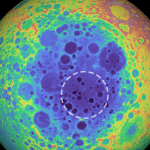Key Takeaways:
- NASA’s upcoming missions, Davinci+ and Veritas, will explore Venus’s atmosphere and geological features, fueled by evidence of potential life-sustaining water.
- These missions mark a return to Venus after a hiatus of over three decades, promising groundbreaking insights into the planet’s evolution.
- Previous research suggests Venus may have hosted a shallow liquid-water ocean and habitable temperatures for up to two billion years.
- Early Venus likely had more dry land than Earth, a condition conducive to supporting abundant life.
- The missions aim to confirm the presence of phosphine gas in Venus’ atmosphere, potentially indicating signs of alien life.
In a significant leap forward, NASA has set its sights on Venus for two pioneering missions: Davinci+ and Veritas. These robotic probes, slated for launch by the end of the decade, represent an unprecedented opportunity to delve into a planet that has remained largely unexplored for over three decades.
Chosen through a rigorous peer-review process, these missions are primed to unravel the mystery of Venus’s transformation from a once potentially habitable world into the scorching, inhospitable environment it is today.
Earlier, British astronomers made waves by detecting phosphine gas high in Venus’ clouds, sparking speculation about potential extraterrestrial life. Building on this, scientists from NASA’s Goddard Institute for Space Studies have postulated that Venus might have hosted a shallow liquid-water ocean and maintained surface temperatures conducive to life for a staggering two billion years. These findings, published in the Geophysical Research Letters, were unearthed using models akin to those employed in predicting Earth’s future climate changes.
The prevailing theory posits that Venus shares Earth’s initial building blocks but took a divergent evolutionary path. Data from NASA’s Pioneer mission in the 1980s hinted at an ancient Venus with an ocean, but its proximity to the Sun subjected it to intense radiation, leading to the evaporation of its early ocean. The loss of water and the buildup of carbon dioxide in its atmosphere triggered a runaway greenhouse effect, culminating in its current hostile conditions.
The simulations conducted by the GIIS team unveiled that early Venus possessed more landmass, particularly in tropical regions, than Earth. This configuration is deemed conducive to sustaining life, with ample water and landmass to mitigate sensitivity to solar fluctuations. The models also indicated that Venus’ slow rotation exposed its dayside to prolonged sunlight, generating rain and a dense cloud cover that shielded the surface from excessive heating. This resulted in mean temperatures slightly cooler than present-day Earth.
The last American probe to grace Venus was the Magellan orbiter in 1990. Since then, European and Japanese spacecraft have been orbiting the planet, contributing to our understanding of this enigmatic world. The forthcoming Davinci+ mission is poised to scrutinize Venus’s atmosphere, investigating its origins and evolution, and determining if an ocean ever existed.
Furthermore, it may offer insights into the enigmatic presence of phosphine gas in Venus’s atmosphere, potentially signifying the presence of life. Complementing this, the Veritas mission will meticulously map Venus’s surface, unraveling its geological history and elucidating why it veered so dramatically from Earth’s trajectory. Through innovative radar technology, it will chart surface elevations and probe for signs of volcanic and seismic activity, painting a comprehensive portrait of this captivating planet.


